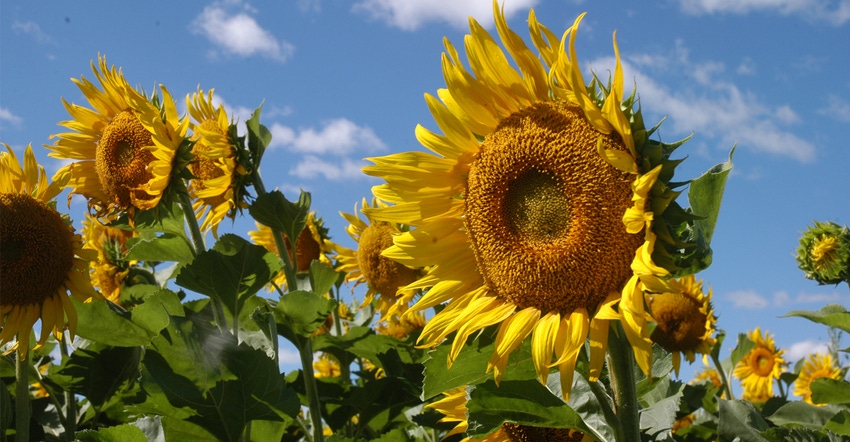
USDA reported Aug. 1 that total planted sunflower acres were 2% higher than what the March intentions report showed.
According to USDA, area planted to sunflower in 2019 increased 6% from 2018 and totals 1.38 million acres. Harvested area for all types is expected to increase 8% from last year to 1.32 million acres as well. Planted area of oil type varieties, at 1.23 million acres, is up 5% from 2018. Harvested area for oil types is expected to increase 7% from last year to 1.18 million acres. Planted acreage of non-oil varieties, estimated at 155,000, is up 13% from last year. Harvested area is expected to increase 16% from last year to 143,500 acres.
Compared with last year, acreage increased in four of the eight major sunflower-producing states. North Dakota had the largest increase from last year at 64,000 acres. South Dakota producers planted 540,000 acres, a 5% decrease from 2018, but maintained its No. 1 ranking in total planted acres once again. USDA pegged U.S. sunflower production nearly unchanged in 2019-20 at 2.12 billion pounds.
So, what does this mean in terms of prices for the rest of this marketing year heading into harvest? After this news hit the market, sunflower prices trended higher as the industry digested the numbers, making sure to cover nearby needs. This was the first report of planted acres and these reports can change from month to month.
Planting was still going on in some states when the survey was taken so changes to planted acres will most likely occur. In the past five years, USDA has changed final planted and harvested sunflower acres significantly by the time the final crop production numbers were released at the end of the year.
In March, USDA did report sunflower seed stocks in all positions at 828 million pounds. Stocks of oil type sunflower seed were at 676 million pounds down 35% from last year at the same time. Non-oil sunflower stocks totaled 102 million pounds, down 47% from last year. This will not give crushers, confection and birdfood plants much cushion if the 2019 U.S. sunflower crop production turns out as USDA is projecting.
Sunflower seed stocks will be extremely tight by the end of this month and should keep old crop prices trending higher. With excellent birdfood and oil demand there is a good likelihood that price premiums will be in place to encourage growers to desiccate and harvest early.
Now that the USDA report is factored into the market, buyers will anxiously watch crop production prospects before making longer term purchases. Mid-August through September is the critical time frame for sunflowers. So far this year most sunflower acreage in the Dakotas and Minnesota has been rated in good-to-excellent condition.
In October, USDA will provide an updated estimate for oil and non-oil sunflower production. This report and demand news will set the tone for new crop sunflower price direction.
Sandbakken is the executive director of the National Sunflower Association.
About the Author(s)
You May Also Like






